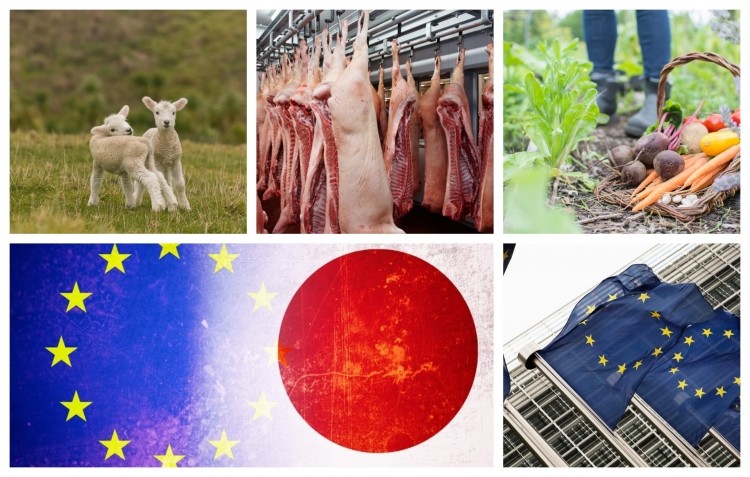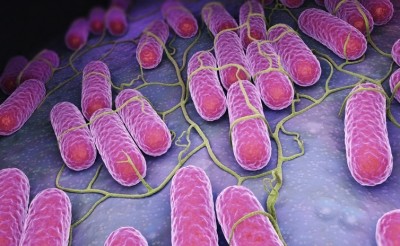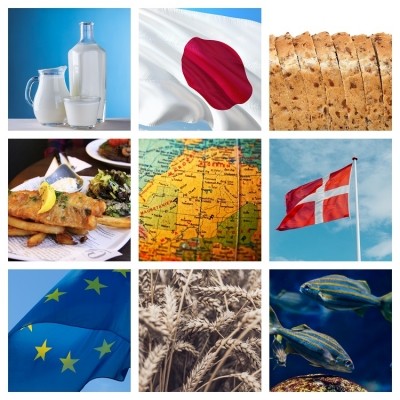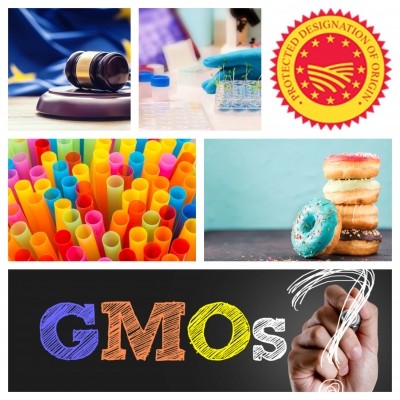Pork acid washes, endocrine disruptors & trade deals: A round up of EU news and views

EFSA okays acid washes
The European Food Safety Authority (EFSA) expert panel on food contact materials, enzymes and processing aids (CEP) adopted an opinion on the use of lactic and acetic acid as decontaminants for pork meat and carcasses at a plenary meeting held 23 to 25 October.
The acids are used as pathogen reduction treatments (PRTs) in the form of dips and sprays.
In a debrief video following the meeting, the panel’s chair, Vittorio Silano, said: “They are clear in terms of safety – there is no risk associated with these two substances either for human health or the environment.
“The efficacy has been a little more difficult to assess. A positive has only been clearly reached for the cuts of pork meat. For acetic acid, we unfortunately have very limited data which made it problematic to reach any conclusion,” he added.
EFSA’s full opinion should be published in the coming weeks.
A spokesperson for the National Pork Producers Council (NPPC), which submitted the request, could not comment in detail ahead of publication of the full opinion, but said it supported the use of PRTs and urged the EU to accept them as part of the – currently stalled – Transatlantic Trade and Investment Partnership (TTIP) agreement.
“The EU currently prohibits the use of anti-microbial or PRTs for pork despite the facts that scientific studies have demonstrated that PRTs produce a safer product for the consumer and that the EU has approved such a treatment for beef,” reads its position paper. “The ban extends to pork imports, which has the effect of making safe US pork prohibitively costly to process for the EU market.”
Practices such as chlorine-rinsed chicken and acid-washed pork, both authorised in the US but not the EU, garnered public attention during TTIP negotiations. Opponents say the practice could lead to falling food safety and hygiene standards in abattoirs and factories as processors rely on the chemicals to remove pathogens.
Tighter rules to come for endocrine disruptors?
Endocrine disruptors are a group of chemicals that mimic, interfere and block natural hormones, and are linked to serious health problems such as infertility, hormone-related cancers and genital malformations.
They are used in food packaging (Bisphenol A is an example) and on pesticides and biocides in food production. They are also found in some cosmetics and toys.
This week the Commission published a strategy on endocrine disruptors that outlines the Commission’s plans for the years to come. It replaces the previous one dating from 1999.The Commission said it would “continue to be based firmly on science and on the application of the precautionary principle”.
The strategy has three central axes: minimising overall exposure to endocrine disruptors, paying particular attention to important life periods, such as pregnancy and puberty; accelerating research that allows for “effective and forward-looking decision-making”; and promoting active dialogue between all stakeholders.
To read the full communication, click here.
EU Consumer organisation BEUC welcomed it, with the expectation it would "close loopholes".
Director general Monique Goyens said: “EU action on endocrine disruptors is overdue. Hormone disturbing chemicals pose a serious threat to the health of current and future generations and too much time has been wasted bickering about definitions and testing methods. This strategy is a real chance to tackle the problem head-on.
“It would be irresponsible to adopt a wait-and-see approach. The gaps in consumer protection are evident: EU laws on cosmetics and toys fail to have any clout tackling EDCs, while for many product groups such as textiles or absorbent hygiene products no rules exist at all.”
Consumer interest in the presence of hormone-disrupting chemicals is growing, it said.
Danish consumer group Forbrugerrådet Tænk developed a mobile app, which allows individuals to scan products and see the chemical contents. So far, it has been used to scan six million products. French group UFC-Que Choisir has a similar app.
EU-Japan vote
A trade deal between the EU and Japan moved one step closer to ratification after members of the European Parliament’s International Trade Committee (INTA) voted in favour of draft recommendations to approve the EU-Japan Economic Partnership Agreement (EPA).
Today, Japan is the fifth biggest destination for EU agri-food exports in the world, worth €6.4 billion, but could be significantly more following the EPA, which would liberalise market access for around 85% of EU agri-food exports to Japan.
Products such as pasta, wine, hard and soft cheeses and processed fruit and vegetables would become duty-free.
According to figures from Directorate General AGRI, pork is the biggest single category export to Japan, worth $1,264 million in 2017, followed by wine and spirits (€827 million).
Industry associations COPA and COGECA, CELCAA and FoodDrinkEurope all welcomed the positive vote.
“The elimination of tariffs and non-tariff barriers agreed with Japan, the protection of European geographical indications (GIs), and future cooperation on agriculture and food-related matters will create new opportunities and help to better respond to changing consumer demands in each other’s economies,” said a joint statement by the associations.
The next step is a plenary vote, which is currently scheduled to take place next month.
Protection for Croatian lamb
A traditional Croatian lamb meat, lička janjetina, is now protected as a Protected Geographical Indications (PGI).
The meat comes from Lika Curly sheep breed that are raised in the Lika-Senj and Zadar counties of Croatia.
“The characteristics of the cooked meat of ‘Lička janjetina’, which has an intense, but not overpowering, taste and aroma of mutton, is influenced by the geographical area in which the sheep are raised, the fact that they feed on the diverse and abundant vegetation of mountain pastures, and their age (90 to 160 days) and body weight at the time of slaughter (22 to 36 kg),” said the Commission.
The full description can be read here.
There are currently over 1,400 registered products, protected by EU law.

















